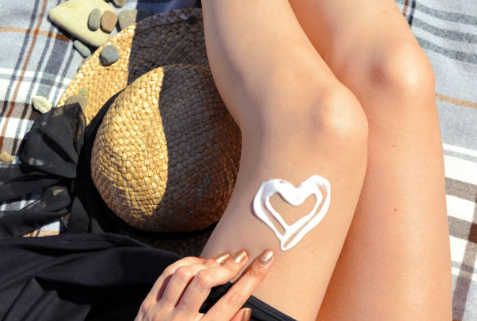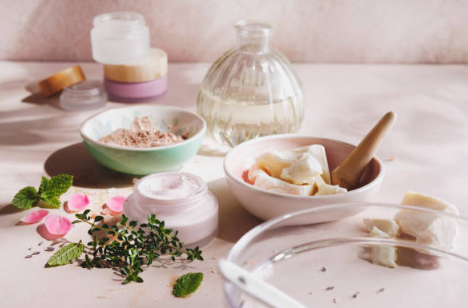Dry, flaky skin—especially on your legs—can be one of the most frustrating skincare issues. It itches, turns red, becomes inflamed, and if left untreated, it can seriously affect your appearance and comfort. To help you get to the bottom of it, we spoke to three board-certified dermatologists and a celebrity esthetician to find out what causes dry skin on the legs—and how to fix it.
Their expert tips and product suggestions—plus some of our own go-to remedies—can help you create a daily routine that nourishes and protects your skin.

What Causes Flaky Skin on the Legs?
Ever wonder why dry skin is so common on the legs? It’s because the outermost layer of the skin (called the stratum corneum) is thicker on the legs. This layer is made up of dead skin cells, which explains why peeling and flaking show up more here than other areas.
Common causes include:
-
Sun exposure
-
Lack of exfoliation
-
Scented lotions (which often contain drying alcohol)
-
Hot showers, which strip the skin of natural oils
-
Harsh soaps and fragranced products, which can lead to irritant dermatitis and barrier damage
-
Skin conditions like eczema and psoriasis
-
Shaving and waxing, which can worsen dryness and lead to peeling
However, winter weather is the most common culprit. In cold weather, the rate at which dead skin cells shed slows down, and your skin produces fewer natural oils—unlike in warmer months when your skin is naturally more hydrated.
Try Dry Brushing or a Body Buff
Dry brushing your legs daily can help boost circulation and slough off rough, flaky skin. The stiff bristles exfoliate while promoting blood flow, which can help stimulate collagen and thicken the skin over time—reducing the appearance of cellulite.
Before you shower, start brushing from your feet and move upward toward the heart. You’ll feel warmer right after brushing—that’s a good sign that circulation is improving. Don’t press too hard; it should feel invigorating, not painful.
You can also try a body scrub, which works similarly by removing dead skin and smoothing texture. It’s a great prep step before shaving or sun exposure.

Use a Body Scrub (or Make Your Own)
Exfoliation is a skincare game changer. You can even DIY your own body scrub:
Mix 1 cup of brown sugar, 1/4 cup of coconut oil, and 1/4 cup of honey. Brown sugar is gentle yet effective at unclogging pores. Coconut oil provides deep hydration, while honey is known for its antibacterial and healing properties. Bonus: it’s all-natural and smells amazing.
Exfoliate twice a week in summer and once a week in winter.
Switch to a Body Oil Cleanser
Could your body wash be the problem? If your legs are dry, try switching to an oil-based body wash like Glossier’s. Unlike traditional soap-based washes, oil cleansers won’t strip your skin or leave a greasy residue. They gently foam and rinse clean, leaving a thin layer of moisture behind.
Oil-based formulas help calm irritation, hydrate dry patches, and reduce redness—all while effectively removing dirt and dead skin buildup.
Look for Ingredients Like Salicylic Acid
Yep, acne-fighting ingredients can help with dry skin too. Chemical exfoliants like lactic acid and salicylic acid help renew skin cells, prevent dead skin buildup, and improve moisture absorption.
They also enhance the effectiveness of moisturizers. Salicylic acid is especially helpful for softening rough patches and preventing razor bumps and ingrown hairs.
If you want to really pamper yourself, consider getting a deep exfoliation treatment at a spa.
Choose a Nourishing Lotion
After exfoliating, always follow up with a rich, hydrating lotion. The best time to apply it is right after your shower, when your skin is still damp. This helps trap in moisture and keeps skin looking and feeling soft.
Look for ingredients like:
-
Ceramides to strengthen your skin’s barrier
-
Aloe vera, glycerin, hyaluronic acid, and provitamin B5 (panthenol) to soothe and hydrate
-
Shea butter to seal in moisture
Upgrade Your Shower Routine
The shower is actually the best place to start when dealing with dry skin. Here’s a simple routine:
-
Use a fragrance-free body wash (fragrance = hidden alcohol = dryness)
-
Exfoliate gently with a scrub
-
Moisturize immediately afterward
Yes, it sounds like a lot—but your skin will thank you.
Take Warm, Not Hot Showers
We get it—hot showers feel amazing. But they’re not your skin’s friend. Stick to short, lukewarm showers instead.
Hot water can damage skin cells and strip your skin’s natural moisture barrier, leading to even more dryness.
If you’re struggling with chronic dry legs, adopting even a few of these habits can make a huge difference. Start small, stay consistent, and your skin will become noticeably softer, smoother, and healthier.